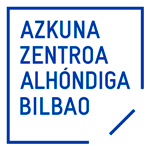
Marín, 1985. Writer, graduate in Journalism with a master’s degree in International Cooperation as well as in Practical Philosophy.
Participant in the experimental Programa de Estudios en Mancomún (peer-to-peer Study Program), from which the work “A través das marxes. Entrelazando feminismos, ruralidades e común” was derived, and she is the co-editor and co-writer.
She has published, among others, the poetic works “Os lobos na casa de Esaú” (Chan da pólvora, 2017) and “claus e o alacrán” (Espiral Maior, 2018) and the narrative work “O axolote” (Galaxia, 2020).
Share:
La ciudad y el sueño (The city and the dream)
The sublime and the monstruous, the monumental and the lesser, the epic and the subaltern, love and power, life and death in an eternal city. These are some of the dualisms, inseparable with limits that are sometimes blurry, and that are used as a starting point to shape a portrait of Rome from the here and the now.
A walk through the city built on a certain awareness of the very fragility of the tale and the weight of the stories that it is made up of. That fragility penetrates the inhabitants or transients. These are the pillars of the literary project La ciudad y el sueño (The city and the dream), a poetic essay in which history, mythology, art, architecture and literature cross paths, strung together in the look of the passing observer.
On my desk and walls, I have dozens of photographs, post cards, annotations of places to visit and to photograph, notes that thrust me from one place to another of the city, that remind me not to lose sight of images and symbols: the gold, the heroic structures, the train stations of the neighbourhoods on the outskirts. In my studio I list the maps, sketches, dynastic lines, outlines of concepts. It is impossible for me to understand the city, bringing me to explore the ancient past. I look in the light, in the invisible traces drawn by the aqueducts, in the caws of the crows.
In these months I have tried to look for myself in the city and all of this is what I’ve found: light, lines to the past, caws, life and death walking hand in hand on every corner of every street, in every park. I wanted to take flowers to some deaths that I now consider mine, but I haven’t even found all of them. I then lost myself in frescos, in alabasters, in exedras, trying to guess how many hands have touched them throughout the centuries, before me.
From my stay in this magical place of Gianicolo I have learnt this: to perceive the city with other eyes, other hands, other ears, to stop in places and realities that for me had not existed. I have let myself get infected by the persons surrounding me, all of them so different in their origins, disciplines, age and their ways of inhabiting the world. I have learnt more than I could have imagined; I have tried to map everything, as if everything were susceptible to be written or described.
I arrived at Rome to speak of life and I soon found myself speaking of death and what death leaves in its wake, of light. I had to tear the project that I had arrived at the Academy with up into a thousand pieces, as it was no longer valid. With those pieces I wrote a new one, perhaps not so different, but more coherent with my here and my now, more real; a book that speaks of the present and the absent, of love and of terror, of power and of identity, of the movement of this city anchored to a river, with its seven hills of open doors, where the wind never stops blowing.
I let the city and its light sink into me. What remains of me afterwards remains unpredictable.
